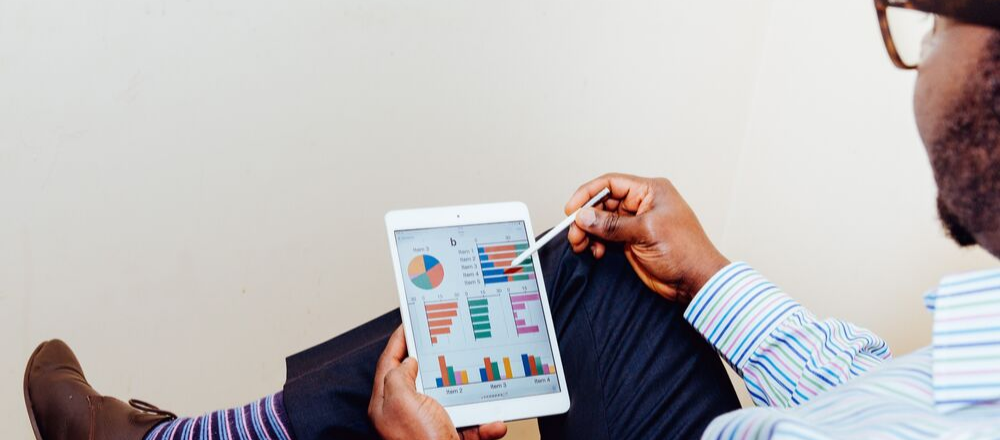Why Minimalist Living Is Trending (And Why CEOs Are Choosing Minimalist Workspaces)
It’s the twentieth century and we have become masters of consumption. Americans spend over $2 billion dollars a year on Christmas trees and $4.3 billion dollars on Valentine’s Day jewelry every February. Even more impressively, the USA purchases $4.9 million dollars worth of Doritos, Cheetos and Funyuns every year (source).
The rise of consumerism started in earnest in the 1920s. The advent of mass media, from print, to radio, to television and now to digital, has created an exciting new industry: advertising. The introduction of advertising changed the mindset of the masses. There was a shift from, “What do I need to own to live comfortably?” to, “What do I need to own to look like I am living comfortably?”.
This mindset shift still inspires people to buy bigger Christmas trees, purchase more extravagant jewelry and place the family size Cheetos bag into their shopping carts. The theory is, “If I own everything that I want, I’ll be happier.”
It turns out, this theory is fairly wrong.
In his book, The High Price of Materialism, Tim Kasser, a Knox College psychology professor, draws on scientific research to prove that excessive consumerism leads to poorer quality of life. People who solely focus on accumulating more wealth and possessions are more likely to suffer from low self-esteem, as shown in a study performed by Chaplin and John in 2007. This low self-esteem can lead to depression and/or anxiety.
In recent years, an increasing number of people have started to agree with Kasser’s warnings.
- The Tedx Talk, The Art of Letting Go, a lecture on the minimalist living movement, has been viewed 2.1 million times
- The correlating documentary trailer, Minimalism: A Documentary About The Important Things, has 1.8 million views
Joshua Fields Millburn and Ryan Nicodemus, the creators of this documentary, have since been featured on the New York Times, Wall Street Journal, Forbes, Time Magazine and more.
What is making people distance themselves from consumerism and choose minimalism?
What Is Minimalist Living and Why Is It Trending?
This is the minimalism elevator pitch, as defined by Joshua Fields Millburn and Ryan Nicodemus:
“Minimalism is a lifestyle that helps people question what things add value to their lives. By clearing the clutter from life’s path, we can all make room for the most important aspects of life: health, relationships, passion, growth, and contribution.”
– Minimalism: An Elevator Pitch
Joshua and Ryan’s film didn’t highlight a new concept but instead dug through our cultural norms to highlight what we should already know. It isn’t about fancy gadgets, ornament covered Christmas trees, diamonds or bulk purchases of Funyuns. What really matters is people’s overall well-being.
Joshua attributes his health and happiness completely to his new minimalistic lifestyle. Since adopting the lifestyle, he has lost eighty-pounds, increased his net worth, pursued his passion for writing and fulfilled himself by contributing his time to helping others do the same. In his words, “You see, removing the clutter is not the end result of minimalism—it is merely the first step.”
Adopting the minimalist lifestyle starts with removing clutter and noise from our lives, and ends with healthier, more productive days. Luckily, there’s some hard science behind this claim. The American Academy of Sleep Medicine discovered that people sleeping in cluttered rooms had more problems making decisions, planning, organizing and completing tasks.
If this is how the brain is affected by clutter while we sleep, how is it affected by clutter while we are awake and functioning throughout our day?
Minimalism In The Office: How Minimalism Affects Productivity, and How These Companies Prioritize a Minimalist Workspace
If clutter decreases cognitive function, a minimalist workspace could have the opposite effect.
As Jason Albanese, co-founder and CEO of the consulting firm Centric Digital, explains in his Inc. article, Four Reasons that Minimalism Makes for Great Office Design: “Go for what’s simple, not newest.”
While consulting with Fortune 500 companies, Albanese told his clients that bells and whistles may make a workspace look like a great place to work, but it doesn’t necessarily contribute to productivity. Albanese explains:
“Many people asked me why we didn’t go with one of those fancy new “smartboards,” workplace tools that use touchscreen technology instead of dry erase markers and can print out what you’ve written on them. But while it may seem advantageous to have something that looks like it belongs on the Starship Enterprise in your office, it’s pointless if the product doesn’t actually make your work easier.”
Centric Digital was named #34 on the Inc. 500 list of the Fastest Growing Private Companies in the USA in 2014, landing the #1 spot for New York City and New York State.
A minimalist workspace:
- Keeps noisy décor to a minimum
- Doesn’t force unnecessary technology into its space
- Uses drawers and shelves for storage
- Prioritizes digital file storage over paper file storage
- Uses simple and functional office furniture
Here are three examples of minimalist workspaces.
GCA, an investment bank, designed a strikingly minimalist workspace in their San Francisco office.
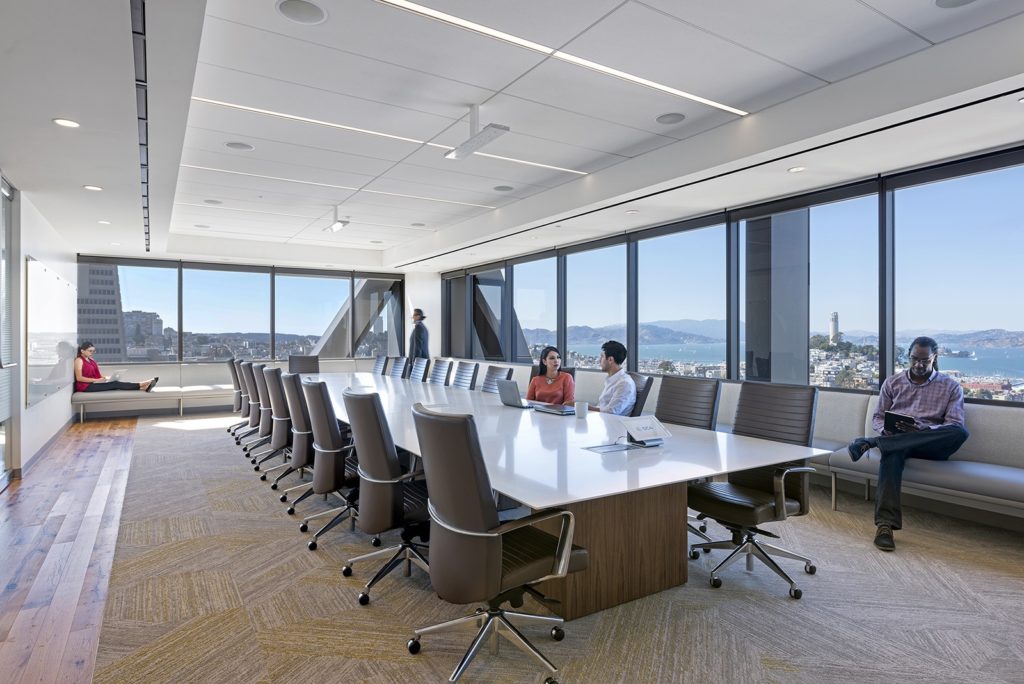
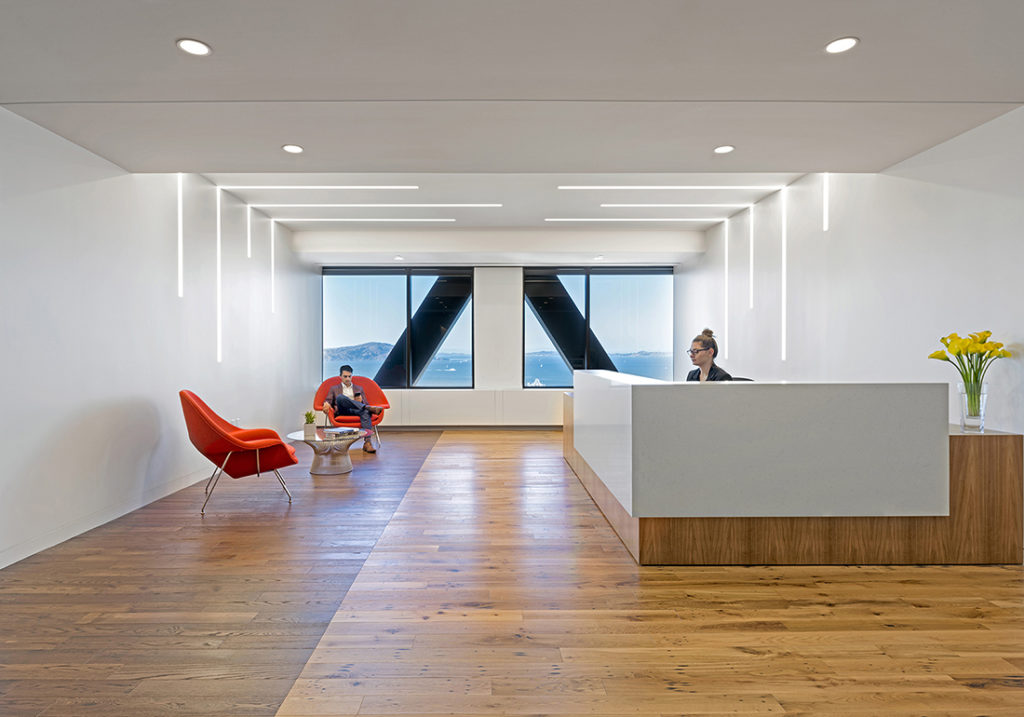
Tom Chung, an independent industrial designer, transformed a factory floor into an office and minimalist workspace.
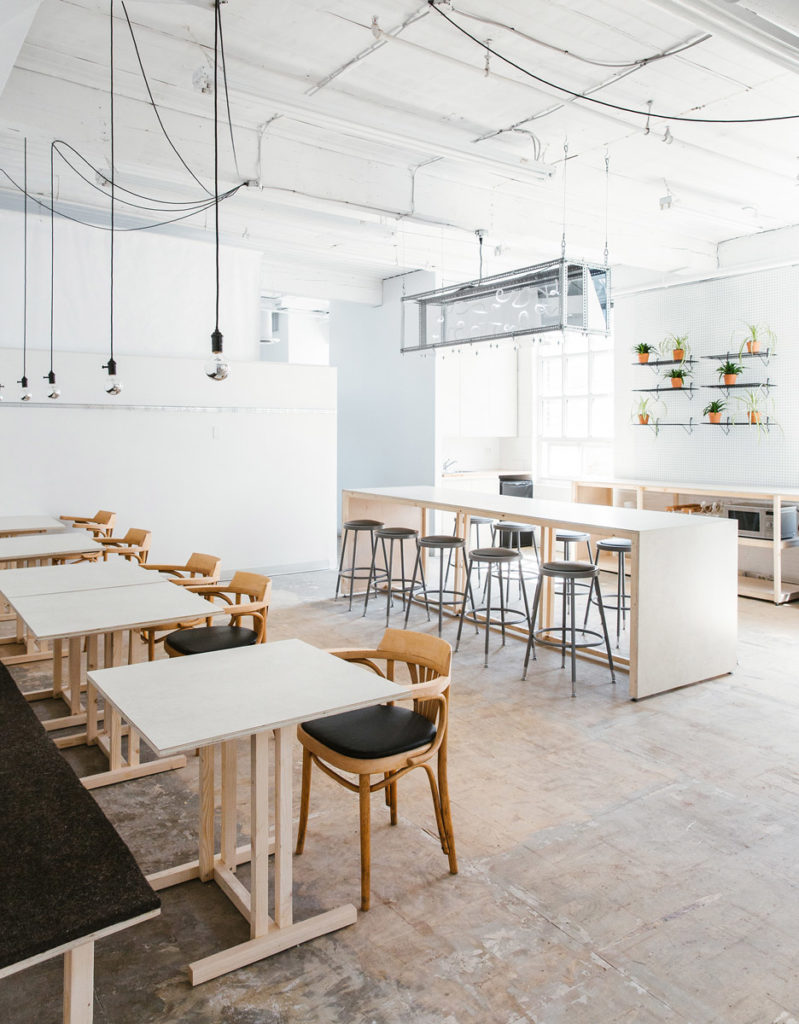
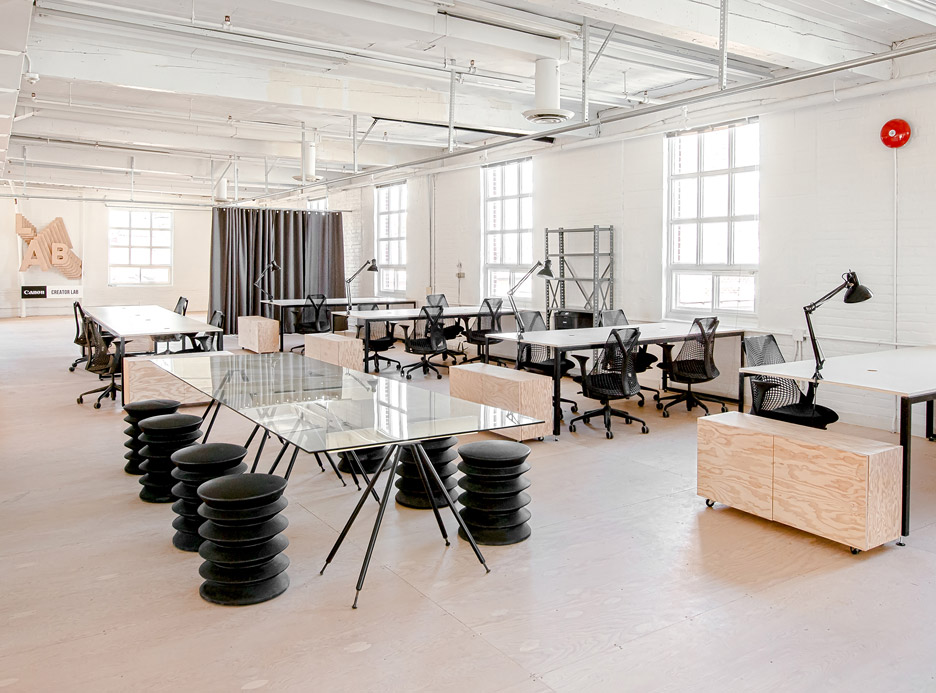
David Heinemeier Hansson is the CTO of Basecamp, a project management software with 2.8 million users. When LifeHacker asked what his at home workspace looks like, he explained:
“Pretty sparse. My office has just a big white desk, a 27″ iMac, a HiRise iPhone cradle and a glass bottle for water. Yes, I’ve heard the bullsh*t about cluttered desks being the hallmark of a brilliant mind. But I like it neat.
Clutter isn’t calm, and calm is how I click.”
Basecamp’s Chicago campus is minimalist on purpose.
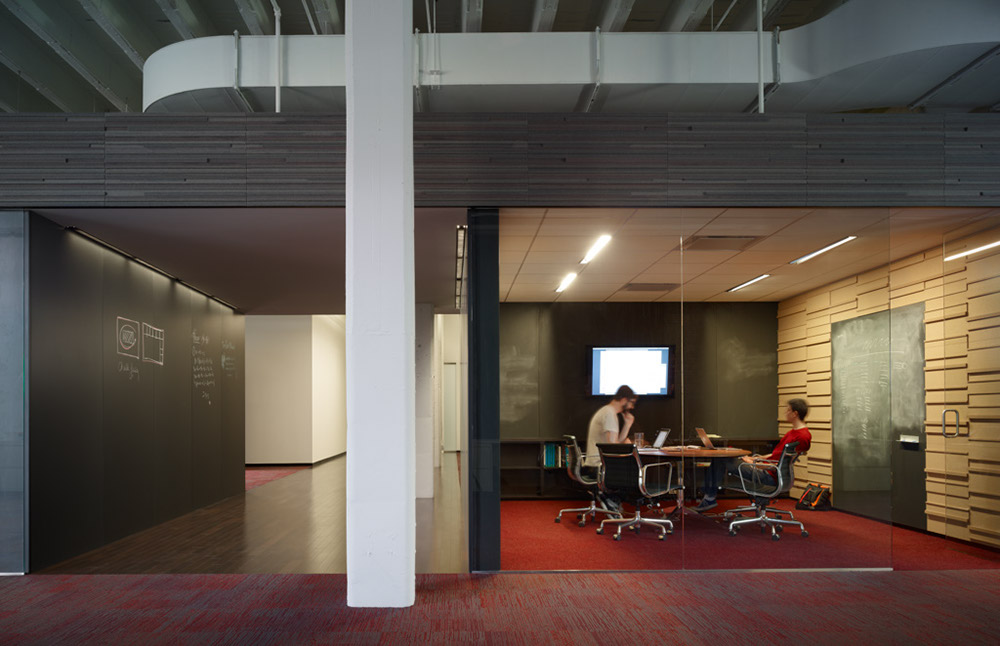
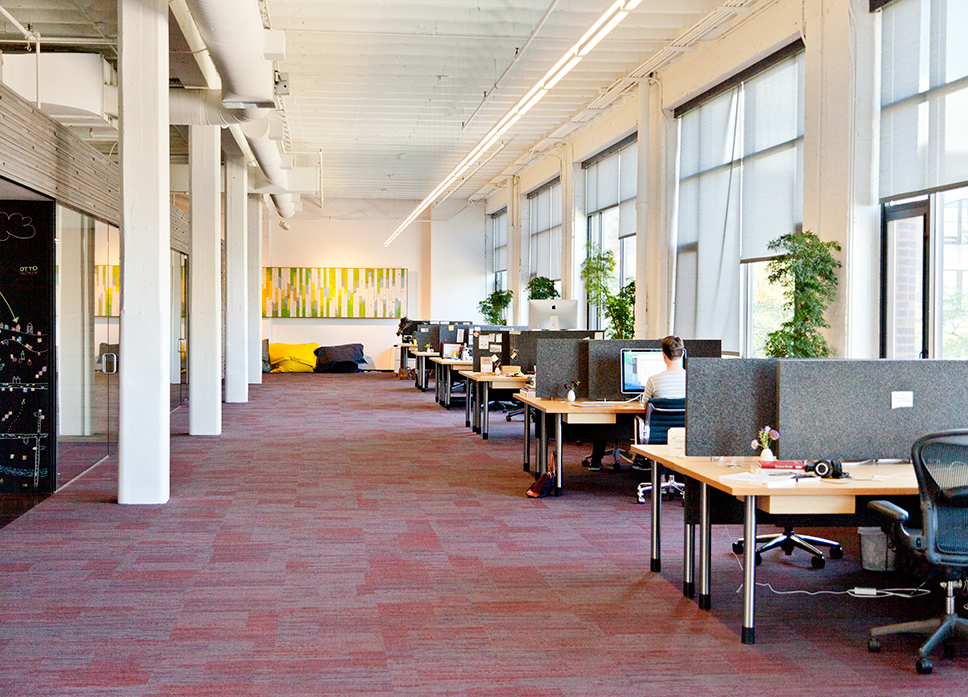
Both CTO and CEO of Basecamp have the same opinion of clutter as it relates to productivity, including clutter within communication and project management.
Jason Fried, CEO of Basecamp and author of the New York Times bestseller REWORK, describes group chat as “being in an all-day meeting with random participants and no agenda.”
How can companies declutter their collaboration tools?
Minimalism In The Digital Space: Why Companies Are Decluttering Their Collaboration Platforms
In the digital age, desktop clutter is only the start of the problem. With company connectivity higher than ever before, many CEOs have taken note of how much time gets lost in the clutter of their group chats, cloud file storage and project management apps.
Jason Fried came to the same conclusion when using group chat to run his company. Chat rooms initially designed for connectivity became louder and louder, inevitably creating too much noise to function properly.
In our article, The Dark Side of Chat, we talk about the university study that discovered workers interrupted while working on a cognitive task have:
- 2X times the number of errors
- 30%-100% increase in feelings of annoyance
- Twice as likely to report being anxious at work
Minimalist workspaces, both physically and digitally, are the key to effective collaboration and project management.
At Brief, the inspiration for our minimalist productivity app comes from studies, like the one above, that showcase the importance of minimalism in the office and project management tools. The goal of our company is to help you be as productive as possible, so we designed an app that allowed us to do just that.
Minimalism has become a trending topic, both inside and outside the workplace. As research continues to show us the positive benefits of minimalist living, companies are jumping on this trend to make their employees happier and more productive with minimalist workspaces and digital tools.
Watch the Minimalism: A Documentary About The Important Things trailer to learn more about the benefits of a minimalist lifestyle and the harmful consequences of consumerism.
Read our article, How To Improve Concentration At Work: 8 Tips From The Pros to create a minimalist workspace and daily routine for improved productivity for you and your team.
Read our article, How To Make Group Chat Work at Work to strategize a productivity plan for your project management system.
Minimize clutter by joining Brief for free today.
